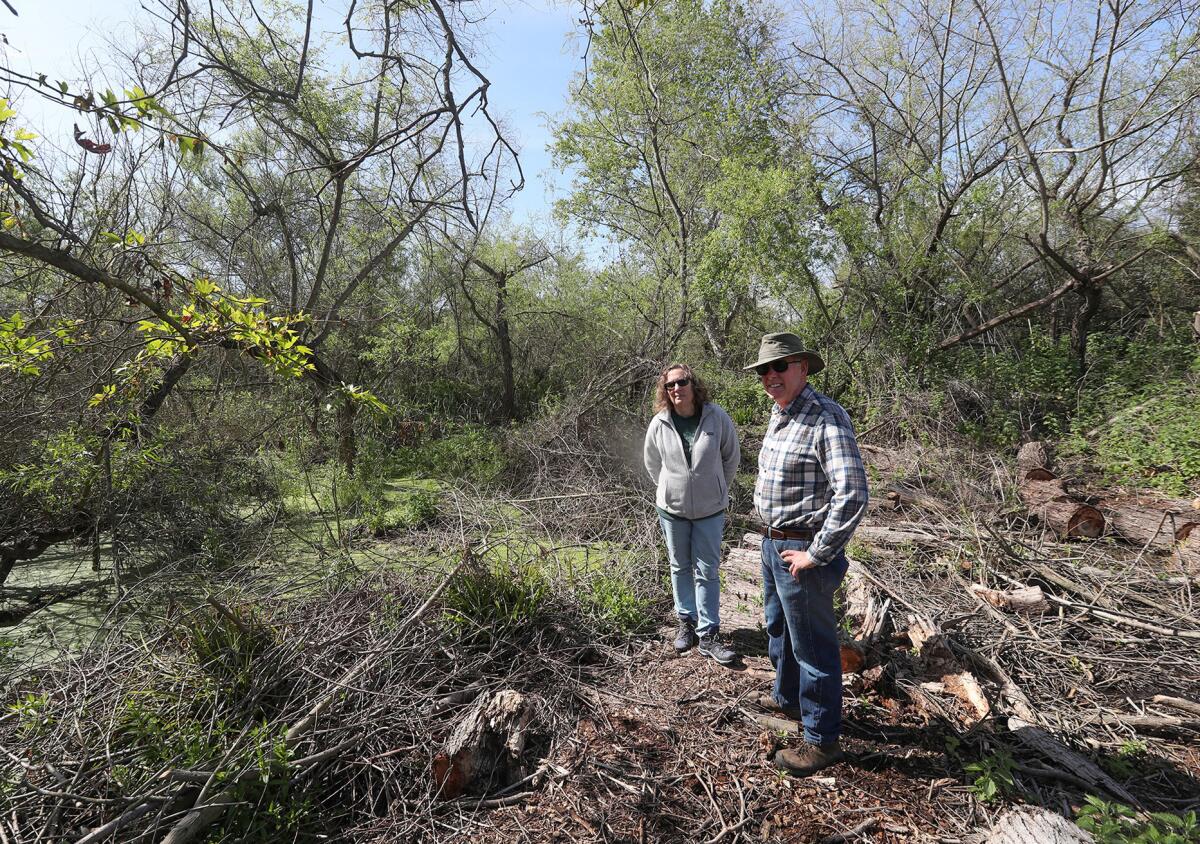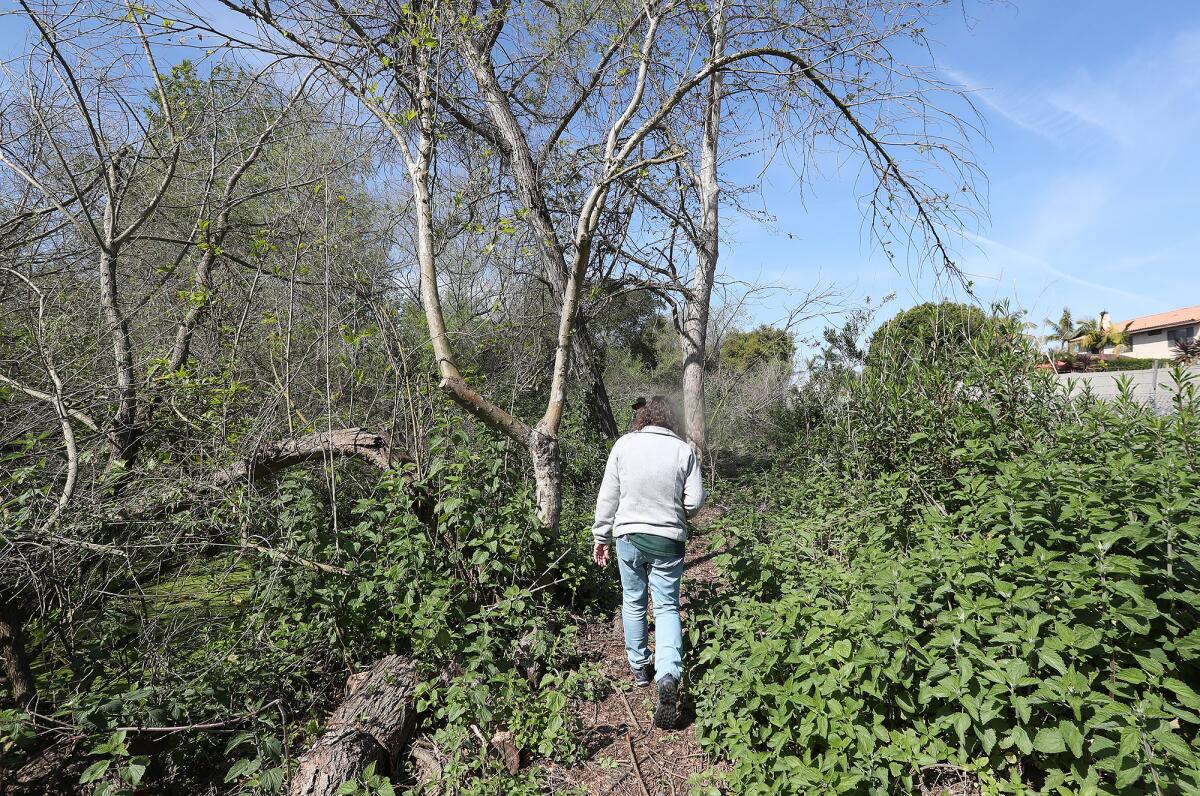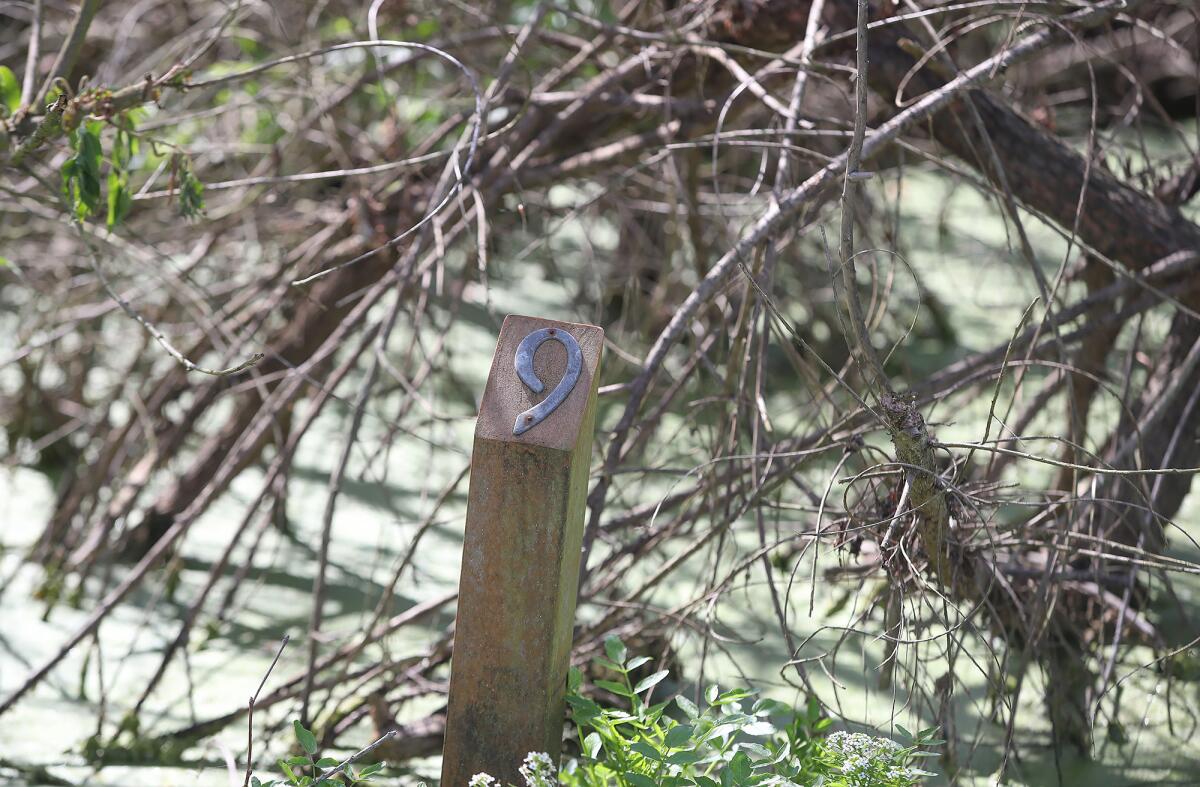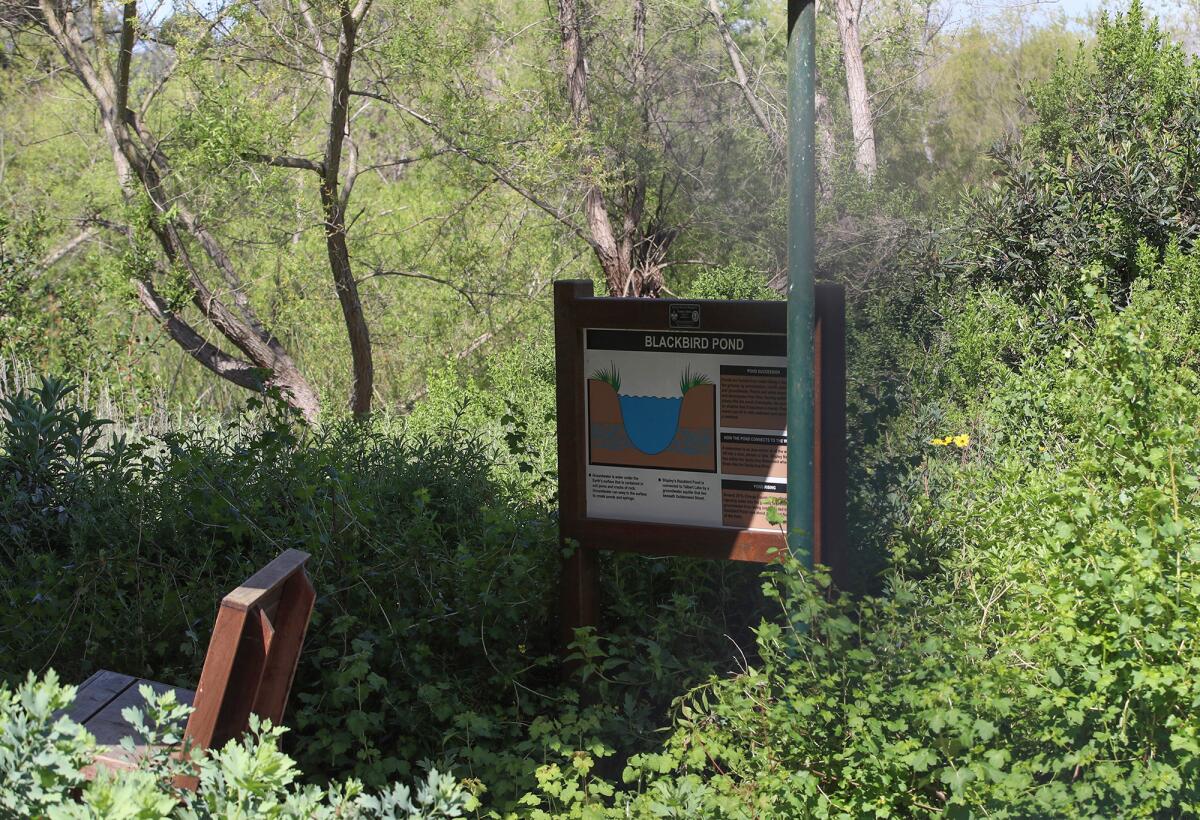With state grant, Shipley Nature Center can restore underwater trail

- Share via
Thanks to a grant from the California Department of Parks and Recreation, a trail that’s gone underwater at Huntington Beach’s Shipley Nature Center is a step closer to being restored.
The department announced earlier this month a total of $6.7 million will be distributed in grants to agencies up and down the coast for projects that aim to protect, restore or enhance existing wildlife habitat. The city of Huntington Beach will receive $383,309 in grant funding for the local nature center, which accounts for about half the estimated cost of the total project.
“Protecting California’s biodiversity is critical as approximately 40% of the estimated 5,500 plant species found in this state are found nowhere else on Earth,” said state parks director Armando Quintero in a statement. “With funding from the California Habitat Conservation Fund, local, state and nonprofit organizations can work toward California’s 30x30 initiative that seeks to protect and restore biodiversity, expand public access to nature, and mitigate and build resilience to climate change.”
Chau Vu, director of public works for Huntington Beach, said the application was submitted in partnership with the Friends of the Shipley Nature Center, the organization that operates the center’s day-to-day activities in an agreement with the city.

Shipley Nature Center opened in 1974 and was named after former Huntington Beach Mayor Donald Shipley. John Scandura, president of the Friends of the Shipley Nature Center, said the city operated it until about 2002. It eventually had to close because of what Scandura said were budget cuts until the Friends of the Shipley Nature Center were able to reopen it in 2005.
“At the time we reopened it, one was able to take a trail that followed very close to the perimeter of the nature center. But what happened in the late 2000s, the Orange County Water District extended their line of injection wells. Those wells inject freshwater into the ground to keep the saltwater out. It’s a very critical system, but an unintended consequence of that was that it raised our water table,” Scandura said.
Scandura said Blackbird Pond grew to triple its size and flooded the northeast corner of the nature center. To make matters worse, there was no way to access it to abate the eventual overgrowth that exists there now.
He said the center and city have tried to lower the water level with a drainage pipe, but it didn’t perform as well as they hoped.

Scandura said the nonprofit first heard about state grants for trail restoration in 2021 and decided to reach out to the city to pursue the funds for the necessary work. The team applied that year for the grant but was not successful.
“[The Friends of the Shipley Nature Center] do tours, field trips and try to educate the public about the history of the trails and all the natural aspects that this hidden gem has to offer. You’d have no idea that it would exist in a community like Huntington Beach. But they came out, and they asked us for help to reinvigorate a trail that was flooded by Blackbird Pond over time,” Vu said.
Vu said city engineers estimate the project will cost about $760,000. The city is on the hook to augment the state grant with the remaining $376,691, but the nonprofit has volunteered its support and is in the process of work-shopping possible fundraising avenues to help.
Vu said the city is waiting on receipt of a draft letter from the state to bring to the City Council to decide on whether or not they should accept the award, which leaves the timeline for work still up in the air.
The project will involve realigning close to 800 feet of trail that have gone underwater and raising the area above that water level through the addition of trail surface such as wood chips and decomposed granite. Some clearing and replacement of trees in the area also need to be done. Vu said that assuming the grant is accepted, the project will need to be designed before it can go out to bid.
“Restoring those trails is not only going to reopen this closed trail and allow the access we had before but also allow us to create new habitats that had been damaged. These habitats are essential to our education and recreational activities. In addition, because we specialize in native plants, we’ve been working with the Native American communities to give them more access to the center, too,” Scandura said. “This is going to create huge opportunities for us.”

All the latest on Orange County from Orange County.
Get our free TimesOC newsletter.
You may occasionally receive promotional content from the Daily Pilot.




